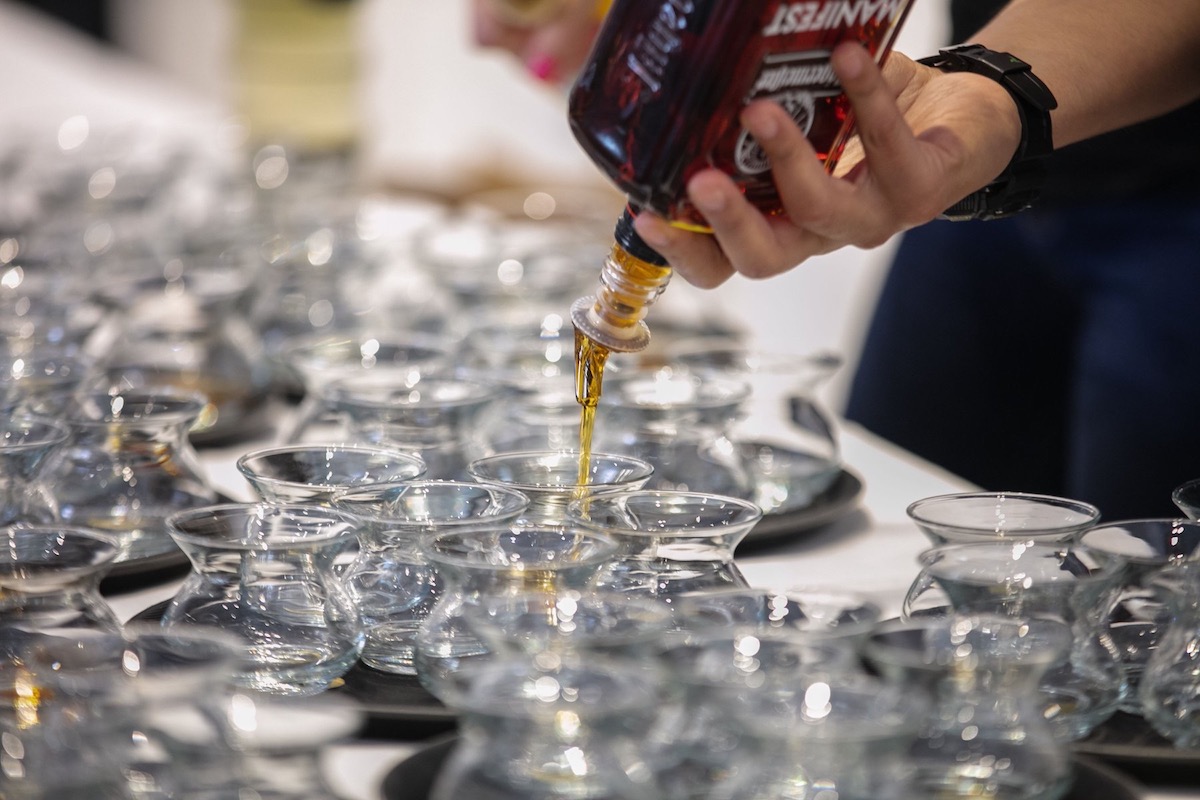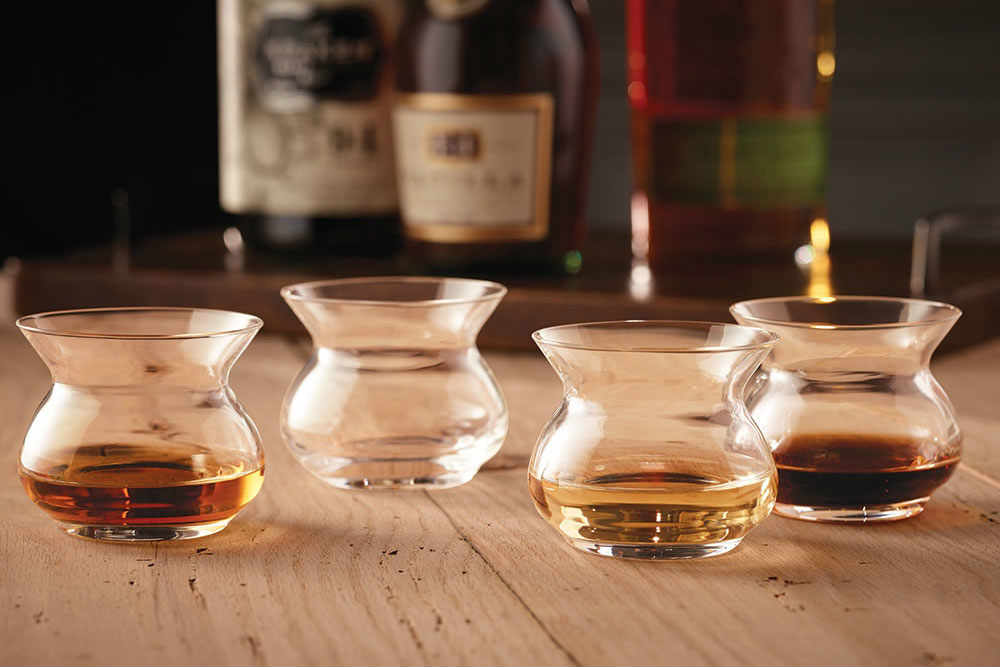Drinking and tasting are not always the same thing. Think of the last time you downed a tequila shot and chased it with lime—you were likely left with a citrusy aftertaste that masked the spirit entirely. Similarly, mixing Coke with whiskey creates a perfectly fine combo, but it’s not the best way to taste the whiskey.
If you truly want to taste what you’re imbibing, it helps to sip and savor it, while keeping your senses and mind open to what you’re experiencing. With some practice, you may be able to pick out certain aromas, flavors, and textures that lead to a greater appreciation for well-made spirits.
There’s no exact set of rules you need to follow, but there are some general guidelines that will help you get the most out of the experience. To learn more, we spoked with Pouya “Paul” Hashemi, Founder of the SIP Awards, an annual international spirits competition. Below, he shares seven tasting tips that will help you through the entire process, from prepping for your tasting to describing flavors and aromas.

SIP Awards founder Paul Hashemi
7 Tips for Tasting Spirits
1. Pre-Tasting
This is an important part of the spirit tasting process to emphasize. If you don’t plan on spitting out each taste, it’s very important to eat something beforehand. But what you eat can affect your palate. I prefer to avoid coffee, anything spicy, and all forms of onion. Onions will devastate your palate for spirit tasting, so avoid them at all costs. It’s best to stick to subtle-flavored carbs like sandwich bread or crackers and other neutral-tasting foods.
2. Choose the Right Glassware
In the process of becoming an expert taster, realizing the importance of the glass became a focal point for me. Personally, I have championed the NEAT glass for years now. But as important as the design of the glass can be, I also encourage consistency in the glassware. If one person drinks from a square-shaped glass and the other drinks from a NEAT glass, both tasters will have a different experience. So, whether you use my preferred glass or not, at least keep the glasses uniform.
3. Visual Assessment
Gazing into a spirit in the right lighting is essentially art to me. There’s a sense of appreciation you get when you lose yourself to that moment. Everyone looks at their beer or wine before taking that first sip, and it’s no different with spirits. The color and clarity can reveal details of the distillation process like aging and filtering. Gauging quality by color is tough though because different casks will produce different levels of flavor and color. If you find yourself in the tasting room of your local distillery, ask if the master distiller is around and have them talk to you about the physical qualities of their spirit.
4. Nosing
I do a subtle swirl right before I use my nasal sensories. It’s just as important as the actual taste to me. The aromatics of a spirit creates an additional level of intimacy between you and your drink. As people, we recreate that additional level of intimacy when we put on cologne or perfume because it adds depth to your persona. The aroma of a spirit works in the same fashion. Also, some glasses just don’t work for this part of the experience, like a wine glass for example. The ethyl alcohol fumes will condense at the opening of the glass and burn your nostrils. It’s safe to say you should stay about two inches away from the glass when you first take in those aromas.

Tasting samples being poured at the SIP Awards.
5. Tasting
I always try spirits at room temperature first. This is the natural state of a spirit, and freezing or refrigerating a spirit will change the texture, flavor, and aromas. My palate is able to absorb some of the more subtle flavors at room temperature. If you’re hosting a spirit tasting with friends or family and you prefer to chill your spirits, make sure everyone either has their taste at room temperature or chilled because the same spirit at different temperatures will yield varying results. If you want to take the extra step in prepping your palate, spit out your first sip and let your palate adjust to the spirit before taking a real sip. There are a lot of sensories in the mouth, and sometimes jumping into the pool before dipping your feet can feel a bit overwhelming. Also, cleanse your palate after each sample by drinking a small amount of water and eating a few unflavored crackers.
6. To Dilute or Not to Dilute
During the tastings at the SIP Awards, we don’t dilute the spirits. I don’t either, but that doesn’t mean you can’t. We serve spirits exactly as the distillers made them to provide an accurate as possible representation of their product, but there are some benefits to diluting that some might enjoy. You can add a drop or two of filtered water to your glass; this cuts back the alcohol burn and could also expose very subtle flavors.
7. Describing What You’re Tasting
I let the spirit sit on my palate long enough for my sensories to pick up flavors. It’s important to stay conscious of your sensories and listen to what they are telling you. When I notice a citrus quality, I start to assess whether it’s orange or lemon notes. Sometimes, you’ll notice that it’s more on the floral side or it could even be spices. Some of these spices are easy to pinpoint so long as you take your time sampling your spirit. I also pay attention to the texture of a spirit and how it feels while in my mouth. Some spirits may feel really light and some could feel heavy. This can help you notice the balance (or imbalance) of a spirit. My notes don’t end after I swallow either, I continue to asses the aftertaste because you could pick up new bitter or sweet flavors.



